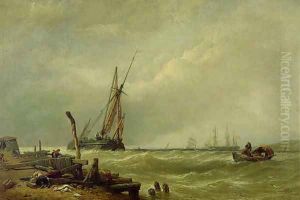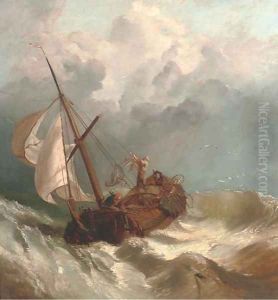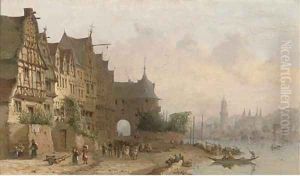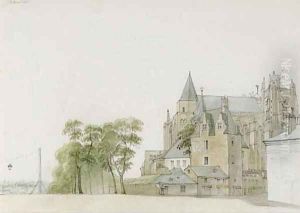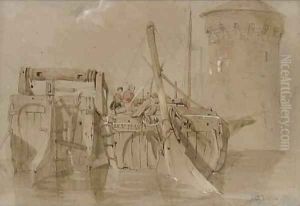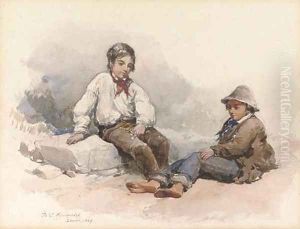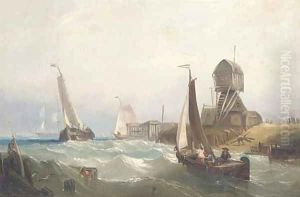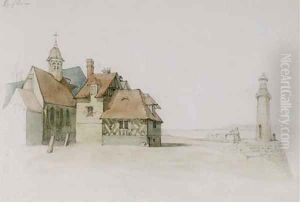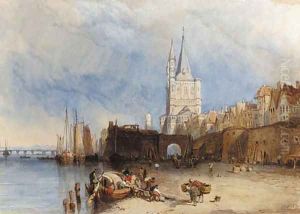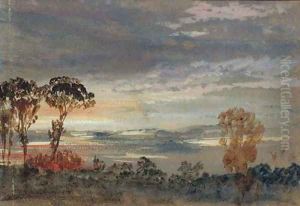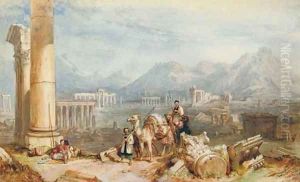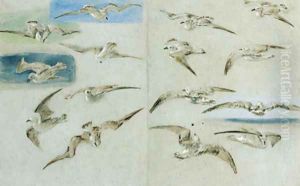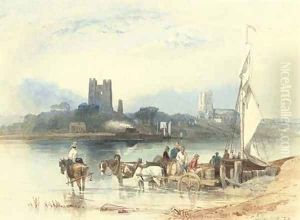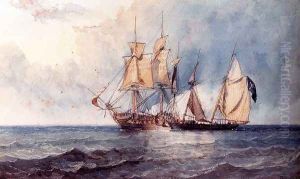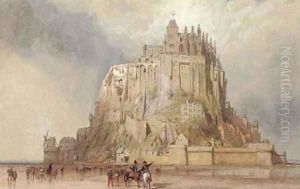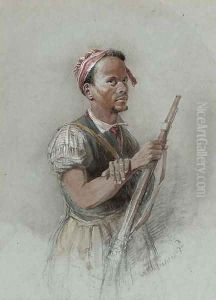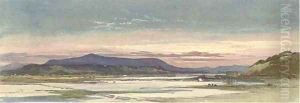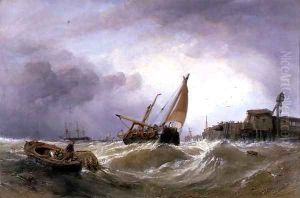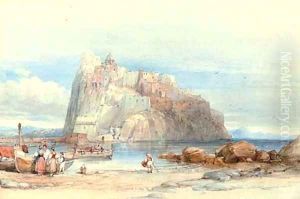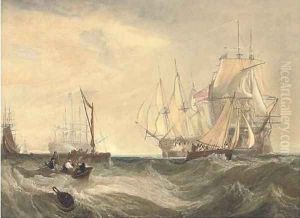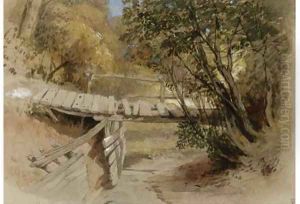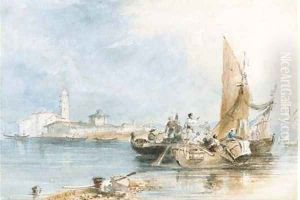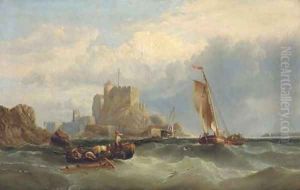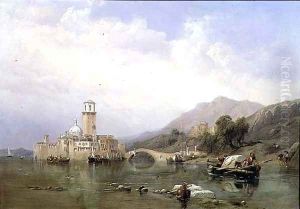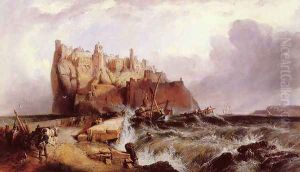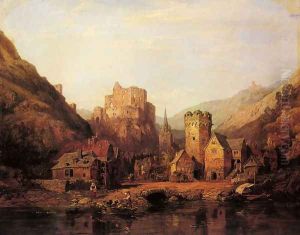Clarkson Stanfield Paintings
Clarkson Stanfield, born on December 3, 1793, in Sunderland, England, emerged as one of the foremost British landscape painters of the 19th century. His early life was marked by adventure and a departure from artistic pursuits; at the age of 12, he went to sea, which sparked a lifelong fascination with maritime subjects. However, his career took a significant turn when he began working in the theatre, creating scenery. This period was crucial for developing his skills in depicting landscapes and seascapes with dramatic effect. Stanfield's theatrical work, particularly for the Drury Lane Theatre in London, was widely acclaimed and laid the foundation for his success as a painter.
Stanfield's transition from theatre to canvas was seamless, thanks to his mastery over atmospheric effects and detailed observation, honed during his years as a scenic designer. He became a prominent member of the Royal Academy, elected as an Associate in 1832 and a Royal Academician in 1835, affirming his status as a leading artist of his time. His works often depicted scenes from his travels, including the rugged coasts of the British Isles, the bustling ports of the Mediterranean, and the historic landscapes of Europe. Stanfield was particularly noted for his ability to capture the changing moods of the sea and sky, earning him the admiration of both critics and the public.
Throughout his career, Stanfield enjoyed considerable commercial success and was held in high esteem by his contemporaries, including Charles Dickens, who was a close friend. The two collaborated on several projects, with Stanfield illustrating some of Dickens' works. His paintings were characterized by their meticulous detail, vibrant color palette, and the effective use of light, qualities that made his work highly sought after during his lifetime and in the years following his death on May 18, 1867. Clarkson Stanfield's legacy as a painter of maritime and landscape subjects remains significant, with his works continuing to be celebrated for their artistic merit and historical significance.
